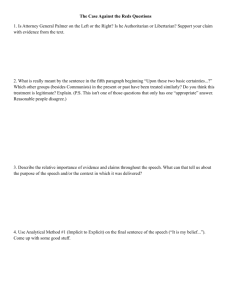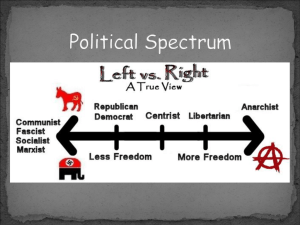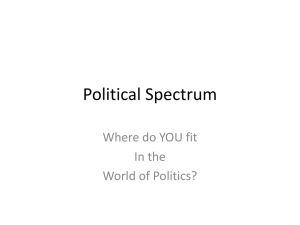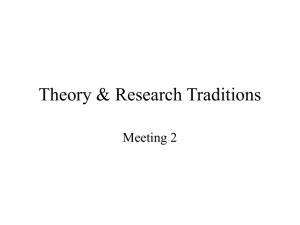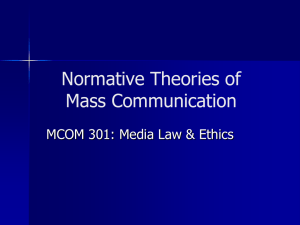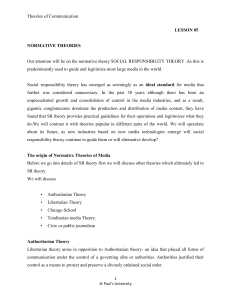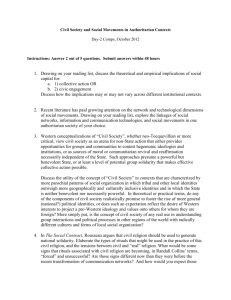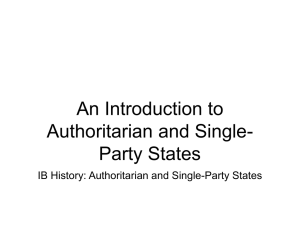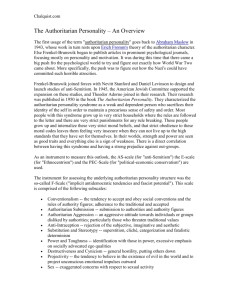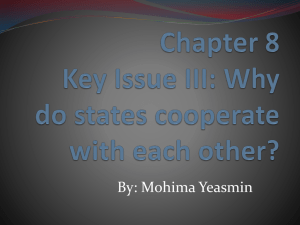Chapter 5
advertisement
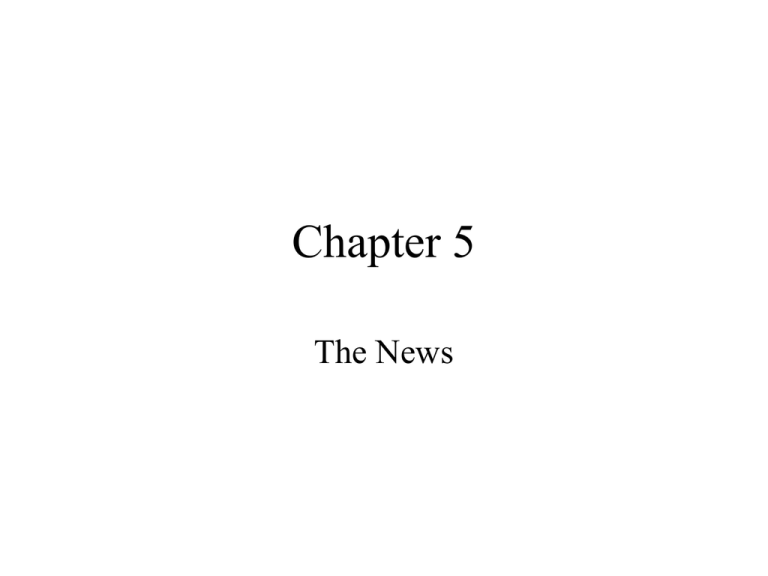
Chapter 5 The News Convergence • A constant since there were only two or three. Now, there are many types of media news that all effect one another and eventually create a new “kind” of news coverage. • What would you call today’s style of news coverage? The Four Major Theories of News • Authoritarian • Libertarian • Soviet Communist • Social Responsibility Authoritarian • The government controls the media completely. • This led to (in U.S.) laws against treason and sedition. • Modern examples include Turkey, Iraq, China, etc (imagine China’s view of the worldwide coverage of SARS) Libertarian • Emerged from a premise that the government should exist solely to serve the interests of the individual. • Media should serve the people not government and the best way to find the truth is to have many opinions aired. • Came about during Age of Enlightenment (15th to 18th centuries) More Libertarian • Jefferson, Franklin, James Madison and others helped form the idea • Freedom of the Press comes about; First Amendment • Watchdog of the government • Fourth Estate • Fifth Estate –broadcast • Sixth Estate--internet • Obviously, we still have this form in U.S. Soviet Communist • Russian Revolution in 1917 • Modeled on Authoritarian Theory • Added the agenda setting/news was to communicate the doctrines of the state and the Communist Party to the masses • Authoritarian did not rely as heavily on use as propaganda; less information in general • Authoritarian—controlled system of news • Soviet Communist—planned system of news Social Responsibility • Evolution of media became more about profit • More chains developed; so fewer ideas were presented • Out of the criticism comes the Social Responsibility Theory • Offshoot of Libertarian that contends press is socially responsible to keep a democratic nation informed More Social Responsibility • There was a clear need for some sort of regulation • Press could not be entirely free • FCC formed for broadcasters but print is still involved in self-regulation • Some modern ideas like FOX New Network deal with the idea of more opinions Functions of Media • 1)to inform • 2)to entertain • 3)to influence (through editorials) • 4)to present advertisements • 5)to transmit the culture Common Faults/Problems • Blaming the Messenger • Watchdog Function • Bad News Only Myth (selective retention) • Myth of Media Truth • Biases (Liberal Press) Wire Services • • • • • AP Associated Press New York 1848 UPI United Press International 1907 Reuters 1850s London AFP Agence France-Presse Paris 1945 Public service not for profits services Radio News • • • • • • Developed around World War II Before, radio did limited news We then heard from Edward R. Murrow Live reports First time we heard “actual” war sounds Then followed development of radio networks ABC, NBC (in coming chapters) TV News • The political conventions of 1948 broadcast by CBS (Columbia Broadcasting System) and NBC (National Broadcasting Company) • Later Vietnam War became first time we saw “actual” war footage in 1960s • The Space Race got many people hooked on TV news as well • Then, it gets out of hand • Watergate, etc. (future chapters) More TV News • • • • CNN Cable News Network Ted Turner early 1980s First 24 hour news channel Others follow but not for more than 10 years • CNN encouraged camcorder use • Rodney King in 1991 Internet • Still not really developed as a news agency • Currently, all other previous forms have websites to help make news interactive • Some news breaks on the internet but few people use as major source of news • What will the convergence bring?
